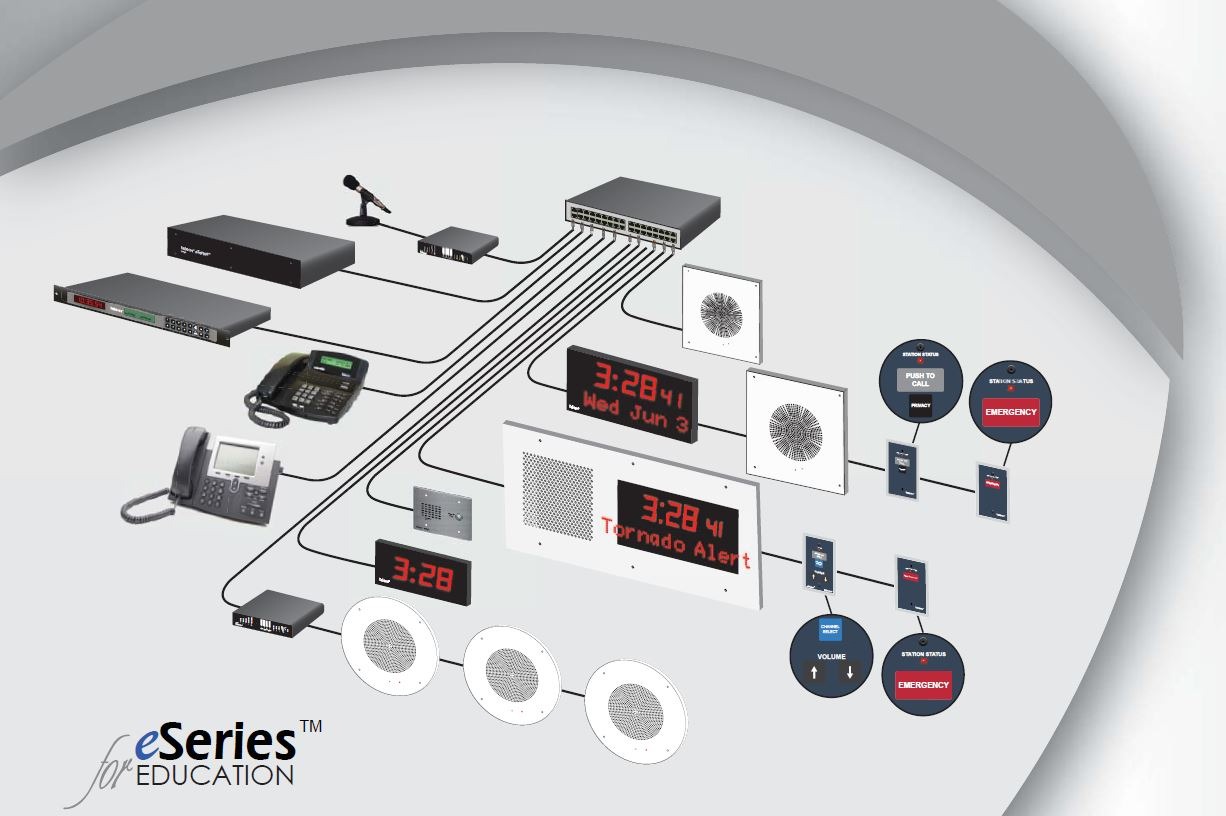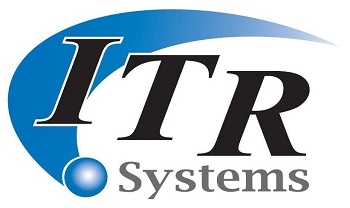
Telecor’s eSeries provides schools a network-based communication solution for intercom, paging, clock synchronization, time tone signaling, emergency messaging, and integration with a facility’s IP phone system–all on IT infrastructure.
eSeries uses Ethernet technology to pass power and data over a facility’s Ethernet network. This ensures simplified network planning and easy installation. PoE endpoints connect directly back to a network switch with a single CAT 5/6 connection. The simplicity of Telecor’s design means eSeries does not require any network configuration or administration, eliminating IP address and DHCP server requirements. The decentralized network structure means no head-end, central server, or control equipment is required. Endpoint device connections are supervised so if there are any
problems or loss of communication, notifications are sent to consoles indicating the fault type and source.
High definition audio ensures crystal clear voice communications and outstanding music broadcast quality. Peer-to-peer technology provides practically an unlimited number of speech channels with unrestricted access to any device on the system.
While the eSeries can be installed on its own parallel network, the low bandwidth requirements also allow the system to be implemented using the existing IT infrastructure.

The e300 eConsole is a master station that is used to easily establish intercom communications with any classroom location, initiate live paging announcements, or select and send pre-recorded notifications to any area of a school.
Users have a choice of speaking hands-free or holding a private conversation using the handset. The 2×20 character LCD screen displays information about incoming or outgoing calls.
Feature keys make it simple for users to scroll through a list of incoming calls, select a paging zone for an announcement, or select a source for broadcasting an audio program to a specific destination.
Telecor’s eSIP Interface integrates the school’s IP-PBX telephone system to the eSeries system and allows the facility’s phones to be used as an extension of the eSeries system.
Phones can place or receive calls to eSeries devices as well as initiate paging announcements throughout the school.
The use of SIP protocol makes it easy to connect virtually any third party VoIP PBX to the eSeries system.


The eAMP is a 25 watt amplifier that adds paging and public address capabilities to the eSeries Intercom System. It is designed to receive audio signals from either the eSeries network or a local input and broadcast them over conventional speakers and/or back into the eSeries network for broadcast to other eSeries devices.
The eAMP also has the ability to store and play pre-recorded announcements or tones to its speakers or over other eSeries devices connected to the network. Activation can be done by the master clock, external contact closures, or from the e300 eConsole.
Each eAMP is intended to provide one zone of paging. For larger applications, multiple eAMPs can work co-operatively on the network to support a comprehensive zone paging system. Each eAMP also has the ability to connect to a higher powered conventional amplifier to drive higher loads.
Telecor’s eSeries would not be complete without a full suite of supporting devices.
Educational facilities can be equipped with a variety of eSeries devices, including: speakers, emergency, privacy, and normal call initiating stations, volume control and channel select stations, a variety of clocks and message displays, weatherproof door intercom stations, and horns for outdoor locations.
Third party devices such as strobes and door release mechanisms can interface with the eSeries devices to provide additional features and operations.


Telecor has partnered with singlewire to support integration between the eSeries system and InformaCast.
InformaCast users can simultaneously send audio streams and text messages to IP phones, IP speakers, computer desktops, digital signage, SMS text and overhead paging systems.
When InformaCast is utilized with eSeries, it automatically self-configures all eSeries devices, so a WAN disturbance does not impede the ability of a local eSeries system from fully supporting local first responders.
Since eSeries endpoints also operate as an autonomous system, the eSeries network can withstand multiple network subdivisions, and continue to operate automatically as a stand-alone intercom and paging system within each part of a divided network. This enhances the reliability of the overall eSeries and Informacast communications system when it is needed most.
